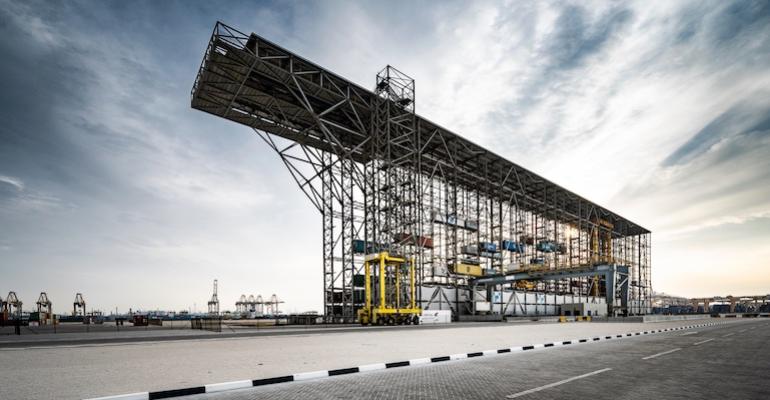We are constantly optimising our ports & terminals to make operational improvements, increase efficiency and bring down carbon emissions. But to me, innovation is about making seismic change. And not just for us but for our whole industry.
There are two tracks in which we do this in DP World’s ports and terminals – the first is the digital pathway. It’s important to stay at the forefront of the industry and it’s a source of pride for me that, for the most part, we control all our software. This means we can keep it highly tuned to our business needs and the unique needs of our customers. We have invested in the resources and we’re seeing impressive gains from the DP World designed digital products we’ve employed. This software is helping our core machine – the berth, yard and gate operations – to become best in class, deeply in tune, and integrated with our equipment technology. Technical competence must be underpinned with state-of-the-art software and DP World is well on the way down this path.
Our own flagship terminal operating system hosted on the cloud, CARGOES TOS+, is easily integrated into real-time operations and terminal automation. Through complementary technologies within the CARGOES ecosystem, such as Machine Learning, AI tools, Internet of Things (IoT) and digital twin platforms, we are able to provide greater automation efficiency, better visibility, and interoperability that gives our customers real time information about their cargo.
At ATI Batangas, for example, we implemented CARGOES solutions, connecting TOS, automated gate systems, customs functions, employee rostering and more – centralising every element of the terminal’s operations. Within 23 days of adopting this new TOS system, ATI Batangas was seeing an average increase of 3.1 movements per hour among its quay cranes.
And while we use this digital technology to enhance our own operations, we’re also on a journey to external expansion, with several industry players interested in adopting our software.
The second area that we see real potential for innovation and impact is in our processes and equipment. This may sound obvious but it’s not necessarily about making sure you have brand new equipment in each port and terminal. These cranes have a 25-year life span so we want to make our steel assets are embedded with the latest technical developments throughout their usage. This can look different depending on the piece of equipment.
For instance, our Global Operations and Engineering team are developing an STS crane remote conversion kit. This would elevate the capability of the crane, keep our people at a safe distance from the heavy machinery and add a layer of digital visibility to the operations that weren’t possible before. A similar idea is being considered for our RTG fleet, this time retrofitting with hybrid or fully electric engines. With this process in place across our whole portfolio, we can see our global infrastructure completely reimagined within the 25-year life span of one crane.
And we can take this thinking one step further – by looking at not just an evolution of the equipment but a revolution. The team is currently working on a completely new STS crane. The operational features have never been deployed before but we estimate that they have the potential to double crane productivity. We aim to make a conversion toolkit which allows us replace the heart of the crane at a tenth of the cost of replacing the whole thing. This sort of innovation would dramatically transform the efficiency and speed of port operations with an impact on our customers that can’t be overstated.
We’ve already shown this kind of revolutionary thinking with BOXBAY – our unique high bay container system designed with the SMS Group. BOXBAY has so many benefits to the port such as increased efficiency, lower carbon emissions, reduced footprint and safer operations. It is capable of cutting down time and resources, using an automated container handling system that can stack 11 storeys high and creating 200% more capacity than a conventional container terminal. Our terminal in Pusan, South Korea, is expected to eliminate 350,000 unproductive moves per year and improve overall truck servicing time by 20% when BOXBAY is operational.
I think you’ll see overtime different types of BOXBAY come into existence. It will morph into the needs of the industry and specific terminals – in essence, it will evolve. We already have requests to this effect. By diversifying the product to accommodate more cargo types, different lines of business, and different customer requirements, we can continue to transform the way we trade.
This is not something that we see impacting just our ports and terminals. These are technologies that are to be used by the whole industry. And when we look at innovation, we’re looking at the customer not the competition. These seismic changes across the industry drive real operational change for our customers’ supply chains. That’s the ultimate value proposition of innovation.
Copyright © 2024. All rights reserved. Seatrade, a trading name of Informa Markets (UK) Limited.
Add Seatrade Maritime News to your Google News feed.  |

